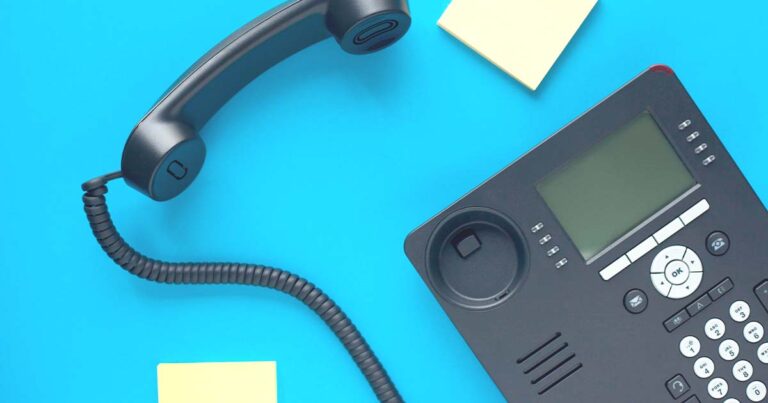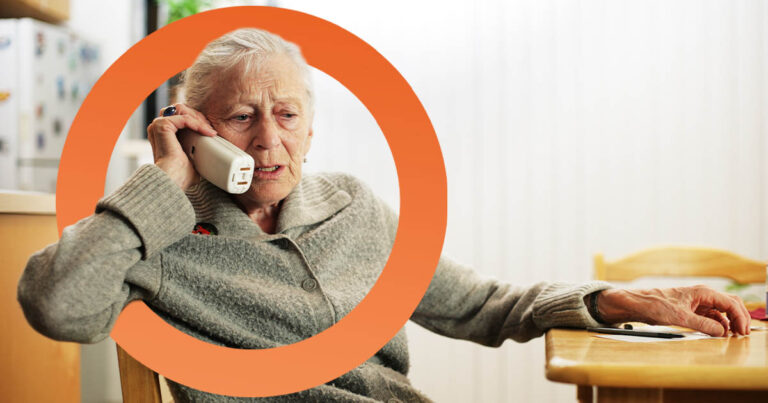What is a VoIP phone?

Traditional landline phone services have undergone a revolution since the introduction of the National Broadband Network (NBN). While at one time you’d make a phone call over a landline phone using copper wires, these days the vast majority of “landline” calls are instead carried over the Internet, using a technology called Voice over Internet Protocol, or VoIP for short.
Technology types love their jargon, but for the rest of us it can be highly confusing working out what VoIP means and how to use it. This guide will take you through the basics so that you can use a VoIP phone, sign up for a VoIP service and understand the differences and requirements of VoIP technology.
What is VoIP?

VoIP stands for Voice over Internet Protocol, but what that means for you as a consumer is a way for voice calls (of the type that you’d make over a regular landline phone) to be transmitted securely over the Internet, instead of relying on the existing copper phone line systems that date back many decades.
A VoIP service takes the voice part of your call – or indeed any sounds in a regular call – and converts them into digital bits that can be carried over the Internet to your intended recipient.
VoIP calls can be purely based around software – and if you’ve ever used services such as WhatsApp, Facebook Messenger or Skype to make “calls” to anyone on your contact list, it’s essentially the same concept at an audio level – but they’re more often referenced around people wanting to use traditional physical home or business phones.
At this level, it’s important to note that there should be very little difference from using your traditional phone versus using that handset in terms of making calls. You still pick up the phone, dial in a number and get connected. In most cases, the call quality will be no different and may even be improved over the transmission quality of old fashioned copper phone lines.
Because VoIP is ultimately software-based, it’s also capable of a lot of functions that regular phone lines needed additional hardware for, whether that’s answering machine functions, call recording, integration with business software and even text messaging on some platforms.
Do I have to switch over to VoIP?
For the vast majority of Australians, the answer to this question is yes, and it’s probably already happened.
The rollout of the NBN saw vast quantities of the existing copper phone network decommissioned in favour of VoIP, largely because the maintenance cost of all that copper ran into the millions of dollars every single year. In limited cases for satellite or fixed wireless customers, traditional landlines may still be an available option, but for the vast majority of Australians, if you want a standard home or business phone wired in, it’s going to be a VoIP service.
One practical reality is that many homes and businesses have foregone traditional landline phones altogether in favour of mobile phones instead. If that describes your situation, you should check out our guide to the best mobile phone plans available to you.
What do I need to get a VoIP service?
Because VoIP uses the Internet, the first thing you’ll need is some kind of broadband plan; for most of us this will be an NBN plan. You won’t get very far trying to send an Internet voice signal without some level of Internet service, after all!
Most NBN providers have VoIP options as part of their plans, sometimes as part of a standard bundle or for a few dollars more per month. One big upside here against the older landlines is that these prices are typically way less than you used to pay just for the landline provision, and many include a lot of call inclusions. Here’s a range of NBN plans that include VoIP services:
The actual data needs of VoIP services are quite low by Internet standards, so you don’t have to opt for a particularly fast service in order to get VoIP working. Naturally you might want a faster service for other features like higher quality video streaming services or gaming or similar, but for plain old VoIP, even a basic 12/1Mbps service will do.
Most of the NBN-compatible modem-routers that are provided by NBN ISPs will include a specific VoIP-capable port for a traditional landline to plug into. In those cases, the hardware side of VoIP is handled by taking the plug from your traditional phone line and plugging it into your router’s ATA (analog telephone adaptor) port.
If your modem-router lacks an ATA port, you’ve got two choices. You could upgrade your NBN modem (https://www.reviews.org/au/internet/best-nbn-modems/) to a model that incorporates an ATA, potentially also gaining a little Wi-Fi quality improvement along the way, or invest in a dedicated ATA interface box that sits between your phone line and your existing modem-router. In that case, you’d plug your phone into the ATA and then the ATA into a spare ethernet port on your router.
If you’ve got a much older phone with a multi-pronged end (technically a 605 type plug) only, you may need to investigate alternative cabling from the phone. If it’s fixed into the phone, or if you don’t have a physical phone and want one, that’s still feasible; older landline phones generally should work, or you can investigate purchasing a VoIP specific handset, often referred to as a SIP phone. SIP in this case stands for Session Initiation Protocol, used by a lot of businesses for far more complex phone systems, but it’s also perfectly fine for regular consumer use as well. Many SIP phones are quite complex, but unless you’re setting up a business, just a basic handset will be fine, and you shouldn’t have to spend a fortune.
What happens to my VoIP phone if the power or Internet goes down?
In most cases, the VoIP phone line goes with it. A service that needs the Internet to work… needs the Internet to work.
The one partial exception to this is if you’re on an NBN connection using Fibre-To-the-Premises with a battery backup service installed. In those cases, you’ll be able to get VoIP over a technology called UNI-V. The combination of UNI-V and a battery backup means that the phone parts of VoIP can continue working during a blackout (but not an NBN outage) for a number of hours, using the power from the battery backup to keep running. However, NBN Co is withdrawing that feature over time, with no new orders available from 26 May 2024, and the entire service decommissioned by 31 January 2031.
Basically, if you don’t already have it, it’s going to be tough to get it sorted before that deadline, and if you’re on any other NBN connection technology such as FTTN, HFC, FTTB, FTTC or Fixed Wireless or Satellite, it’s not available to you anyway.
The best advice we can give if you’re concerned about being able to communicate through blackouts or NBN outages is to spend just a little money on a cheap spare smartphone and PAYG 365 day expiry SIM plan. Keep the spare phone charged (or keep a battery pack handy) and then it’s there if you need it even if your VoIP service is temporarily offline, without having to spend a fortune on a rolling monthly postpaid service.
Related Articles



